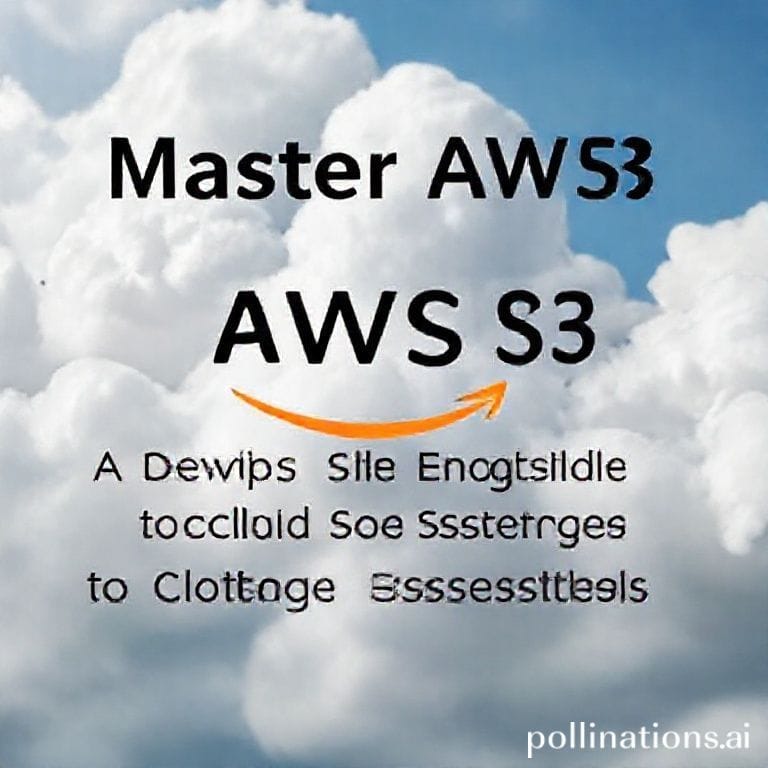After establishing secure network foundations with AWS VPCs and subnets, I encountered a critical question in my cloud journey: Where do you safely store persistent data that survives EC2 instance shutdowns? The answer led me to Amazon S3 (Simple Storage Service), AWS’s resilient object storage solution that became indispensable to my infrastructure.
Why AWS S3 Matters in Modern Cloud Architecture
Amazon S3 revolutionized my approach to data management by providing:
- Unlimited storage capacity with 99.999999999% durability
- Global accessibility through REST APIs and SDKs
- Integration with nearly every AWS service
- Cost-effective storage tiering options
Core S3 Concepts Every Developer Should Master
1. Buckets and Objects: The Building Blocks
In S3, buckets act as logical containers (similar to directories) while objects represent your stored files. Each object contains:
- Data payload (up to 5TB per object)
- Metadata (content-type, custom key-values)
- Globally unique identifier combining bucket name, object key, and version ID
In my sandbox environment, I created a bucket using the AWS CLI:
aws s3api create-bucket --bucket my-devops-logs-mumbai --region ap-south-1
2. Regional Architecture and Data Residency
S3 buckets exist within specific AWS regions, enabling compliance with data sovereignty requirements. When I configured my Mumbai (ap-south-1) bucket, I ensured:
- All data remained within India’s geographical boundaries
- Low-latency access for Mumbai-based EC2 instances
- Automatic cross-AZ replication within the region
3. Storage Classes: Optimizing Costs
S3 offers multiple storage tiers tailored to access patterns:
|| Standard | Intelligent-Tiering | Glacier ||
|———-|———————|———|
| Access Time | Milliseconds | Milliseconds | Minutes-Hours |
| Ideal For | Frequent access | Unknown patterns | Archives |
| Cost (Mumbai) | $0.025/GB | From $0.023/GB | $0.004/GB |
I implemented lifecycle policies to automatically transition backup files:
aws s3api put-bucket-lifecycle-configuration --bucket my-backups --lifecycle-configuration file://policy.json
4. Security Best Practices
Proper access control prevented unauthorized data exposure in my projects:
- IAM policies for service-specific access
- Bucket policies restricting public access
- Server-Side Encryption with AES-256
- Cross-Origin Resource Sharing (CORS) configurations
5. Versioning and Data Recovery
Enabling versioning saved me from accidental deletions by maintaining:
- Full revision history of every object
- Protection against overwrites
- Compliance-ready audit trails
Practical Implementation: Backup System Architecture
My EC2 instances now automatically push daily backups to S3 using this workflow:
- EC2 instance runs backup script at 2 AM
- Compressed tar file created with timestamp naming
- Upload to s3://my-app-backups/year=2025/month=11/
- Lifecycle policy transitions files to Glacier after 90 days
- CloudWatch monitors upload success metrics
Critical Considerations for Production Systems
- Consistency Model: New PUTS have read-after-write consistency while overwrites and deletes have eventual consistency
- Performance: Achieve 3,500 PUT/5,500 GET requests per second per prefix
- Transfer Acceleration: Enable faster uploads via CloudFront edge locations
Next Steps in Your S3 Journey
While this covers foundational S3 concepts, dive deeper into:
- S3 Select for querying CSV/JSON files directly
- Batch Operations for bulk object management
- Access Points for managing shared datasets
- Integrating with AWS Lambda for event-driven workflows
Amazon S3 has transformed how I approach storage challenges – providing durability that exceeds traditional data centers while enabling innovative cloud-native architectures. The true power emerges when combining S3 with other AWS services to create automated, resilient systems that would be impractical to build on-premises.

Leave a Reply